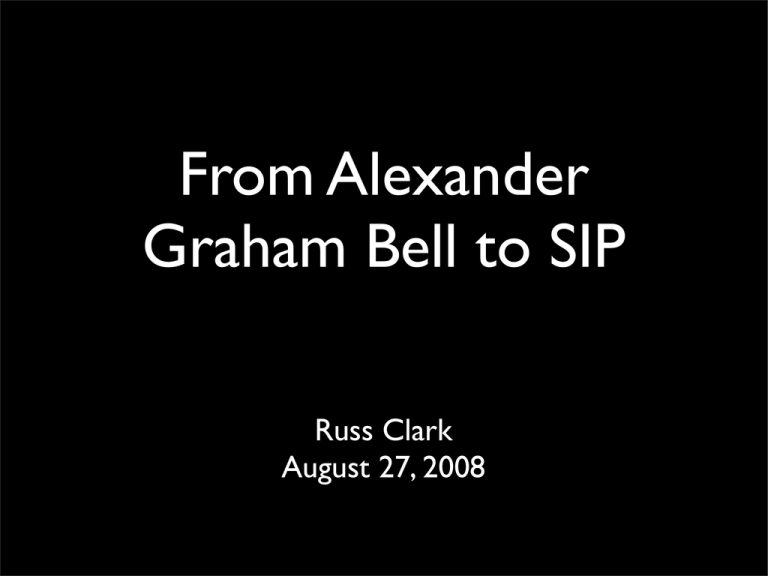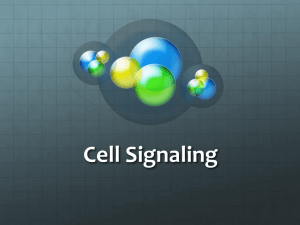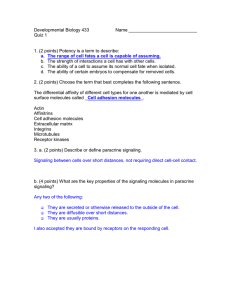From Alexander Graham Bell to SIP Russ Clark August 27, 2008
advertisement

From Alexander Graham Bell to SIP Russ Clark August 27, 2008 Origins of Telephony “Watson come here, I want to see you!” • • Dedicated circuit, point to point service • • Telephones sold in pairs as a dedicated intercom No signaling necessary ... added a “bell” to call the other person to the telephone 4 KHz, duplex audio service The Switchboard Copper Pair • • Tip and Ring Human Operator Minimal signaling turn the crank to ring the bell tell the operator who you want to talk to operator connects you with a patch cable In Band Signaling • • • • Long Distance with Operators Trunk Lines • • • Local Loop Human Operators connecting one switchboard at a time Local loop lines distinguished from trunk lines Signaling is still the same: ring the bell and tell them where you would like to connect The Automatic Switch • • • • Patented by Almon Strowger in 1891 Same basic design used for more than 60 years Invented because Strowger felt that the operator was not practicing Network Neutrality! Pulse dialing: numbers indicated by count of pulses pulses cause switches to “step” up to appropriate location: the “Stepper switch” In Band Signaling • • Hierarchical Network # 10 70 200 800 3000 • • • • • Hierarchical routing architecture Designed to increase fault tolerance, minimize blocking 99.999% available - less than 5 minutes downtime per year on any given line/trunk .01 blocking probability statistical capacity planning - Erlangs Hierarchical Network • As capacity increases, additional tandem trunks can be added Problems with In-Band Signaling • • • Voice and signaling don’t require the same network features Single point of failure Toll fraud security issues arise when users can inject control signals into the network See Captain Crunch • • Problems with In-Band Signaling • • • Voice and signaling don’t require the same network features Single point of failure Toll fraud - See Captain Crunch Common Channel Signaling (CCS) • • • • Use separate networks for the voice and signaling Also called “Out of Band Signaling” Developed in 1960’s for network to network signaling STP - Signal Transfer Point packet switches originally 10 STP pairs across the country for thousands of voice switches • • Signaling System #7 (SS7) • • • • The core signaling standard for US networks SSP - Service Switching Point - voice switches with SS7 control interfaces STP - Signal Transfer Point - call routing and control SCP - Service Control Point - databases of call feature and customer information Advanced Intelligent Network (AIN) • • • • Move to software driven features A central database of signaling and service data Originally developed to support 800 numbers time of day call routing map one number to another number In mid 1980’s there were around 10 database servers deployed in pairs for reliability • • • Soft Switching • • • • • • Since the 1990’s, there has been movement to true soft switching Separation of transport from Call Processing and Service Processing The IP Internet is the core “transport” for both signaling and voice Moving toward IMS: the handsets have become more sophisticated and powerful Need intelligent way of doing session control Development of SIP - Session Initiation Protocol and IMS Telephony Characteristics • • • • • • 4 KHz Audio Channel POTS - Plain Old Telephone Service Physical Circuits have evolved to Logical Circuits but the basic service interface is the same Simple end-user devices, Intelligent network to provide advanced services Regulatory requirements universal service 5 9’s reliability Sophisticated charging and billing architectures • • Themes • • • • Separation of signaling and control from voice Focus on core voice service - QoS Transition from analog to digital first in the core trunks then the switches now moving to the edges Increasing intelligence inside the network to provide new services keep the changes to the handset minimal centralize management and control capture revenue • • • • • • Contrast This With Traditional IP Services channel for for data and control (e.g. TCP, SNMP, • One DHCP, RIP,BGP) • It’s always been digital, analog data is digitized before use in the core, IP routing, best effort datagram • Simplicity services • Complexity and features are implemented at the edges • clients and servers • Data transport is billed at a flat rate • Service (application) billing is not part of the network The IP Multimedia Subsystem - IMS Bridging these two worlds • • • • Telco Separation of signaling and control from voice Focus on core voice service - QoS Transition from analog to digital • • • first in the core trunks then the switches now moving to the edges Increasing intelligence inside the network to provide new services • • • keep the changes to the handset minimal centralize management and control capture revenue Internet • • • • • • One channel for for data and control (e.g. TCP, SNMP, DHCP, RIP,BGP) It’s always been digital, analog data is digitized before use Simplicity in the core, IP routing, best effort datagram services Complexity and features are implemented at the edges • clients and servers Data transport is billed at a flat rate Service (application) billing is not part of the core network service





